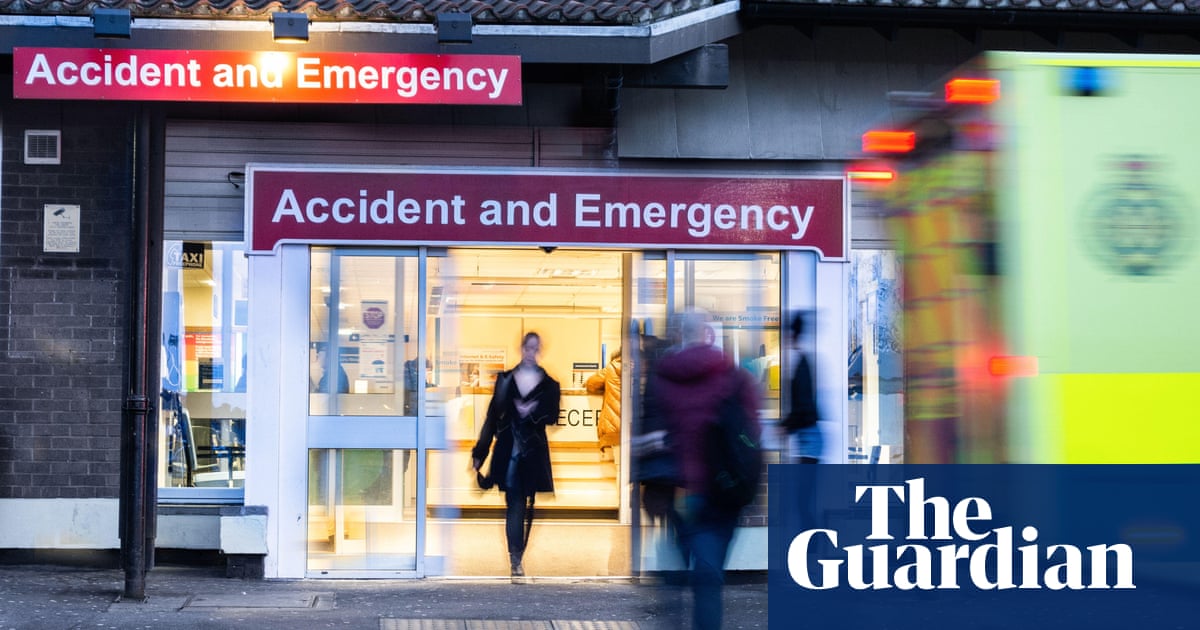
The NHS in England has had its busiest summer ever in A&E with 4.6m attendances over the past two months, while 1.5m hospital appointments were rescheduled because of the junior doctors’ strikes, according to the latest figures.
The three busiest months for A&E staff in history have been in 2024, with 77,945 attendances a day in May, 76,469 in June and 74,459 in March.
The surge in demand came at a time when the NHS was hampered by industrial action. Junior doctors were on strike between 27 June and 2 July, which led to 61,989 acute appointments needing to be rescheduled. As a result, nearly 1.5m appointments have been affected since the start of the dispute.
Meanwhile, the overall hospital waiting list for elective care, which refers to non-urgent services such as hospital scans and diagnostics, rose again in June to 7.62m – an increase of 19,100 compared with the previous month.
An estimated total of 6.39m patients are now on waiting lists. At the end of June, only 58.9% had been waiting less than the constitutional standard of 18 weeks, against a target of 92%.
The latest figures come as the government has pledged to clear the NHS waiting list backlog within five years.
Prof Stephen Powis, the NHS national medical director, said: “A&E staff are under significant pressure and the NHS is in the middle of what could be its busiest summer ever, with a total of 4.6m attendances in the last two months alone and 2024 now having seen the three busiest months for A&E on record.
“While we have seen improvements in the number of patients seen and treated within four hours in A&E, slightly faster ambulance response times and more than three-quarters of cancer patients receiving an all-clear or diagnosis in four weeks, it is clear that waits for patients across a range of services remain unacceptable and there is much more to do to deliver more timely care for those who need it.
He added: “Nobody in the NHS wants to see patients experiencing long delays and we are committed to working with the government to create a 10-year plan for health that includes a clear plan to bring waits down.
“In the meantime, staff continue to work incredibly hard to deliver the best possible care for patients, and it is vital that people continue to come forward when they have health concerns.”
Tim Gardner, the assistant director of policy at the , said that the figures revealed the “monumental task” the new government faces “in putting the NHS back on its feet”.
“The pressures on the health service are being felt most keenly by patients needing urgent and emergency care … there are no quick fixes and the £22bn shortfall in the public accounts set out by the chancellor last week underlines that difficult decisions on tax and spending will be needed. While the government has made economic growth its primary mission, a thriving economy requires a healthy population and a strong health service.”
Saffron Cordery, the deputy chief executive of NHS Providers, said the figures reflected a “really tough summer for the NHS”.
“They also show that for urgent and emergency care 2024 is on track to be the busiest year ever. That is putting services and staff under stress,” Cordery said. “Despite increased activity across services, performance on many fronts is a long way off where it needs to be.
She added: “No one, least of all trust leaders, is complacent about that. Patient safety is paramount.”
Source: theguardian.com



